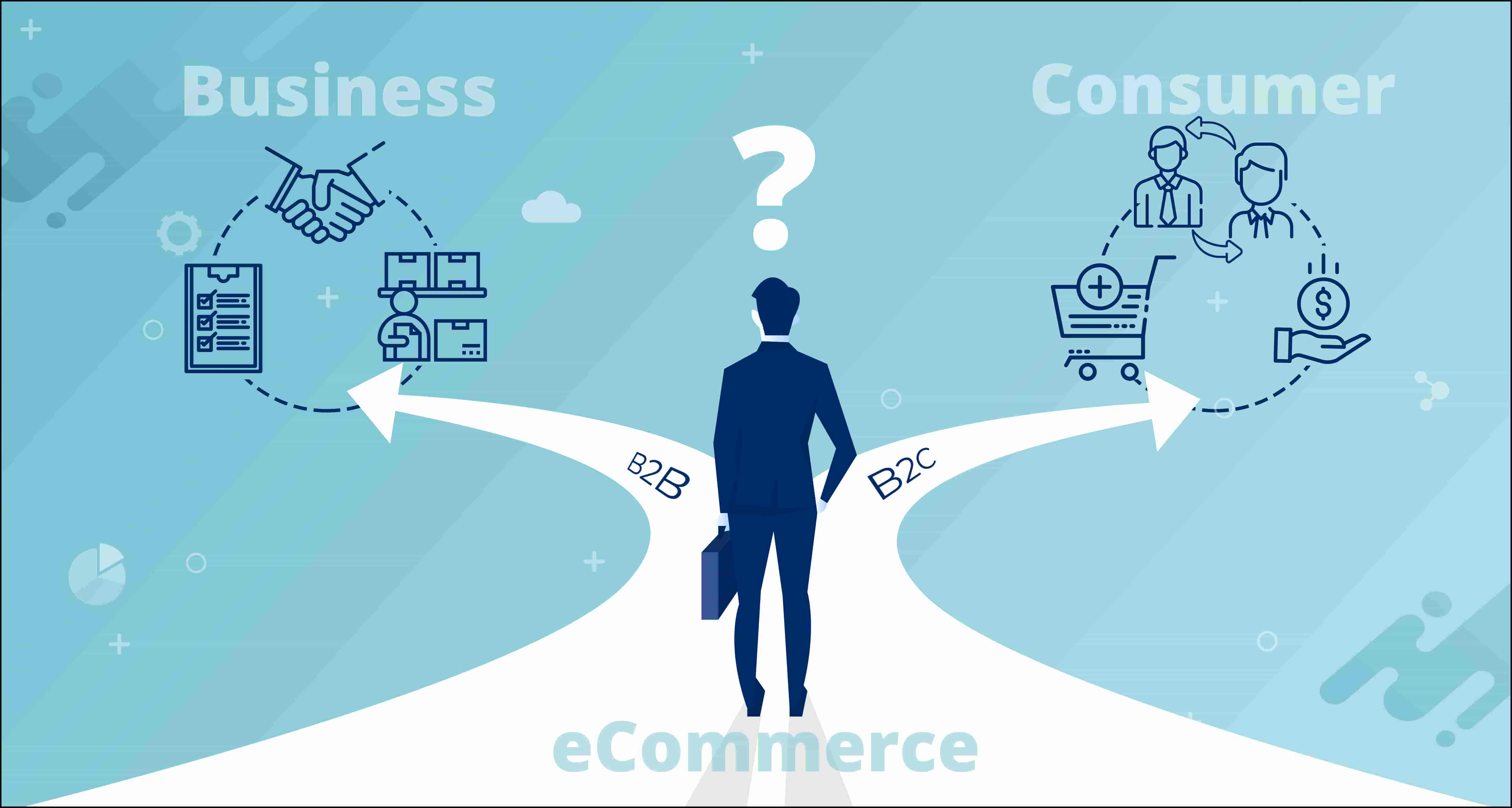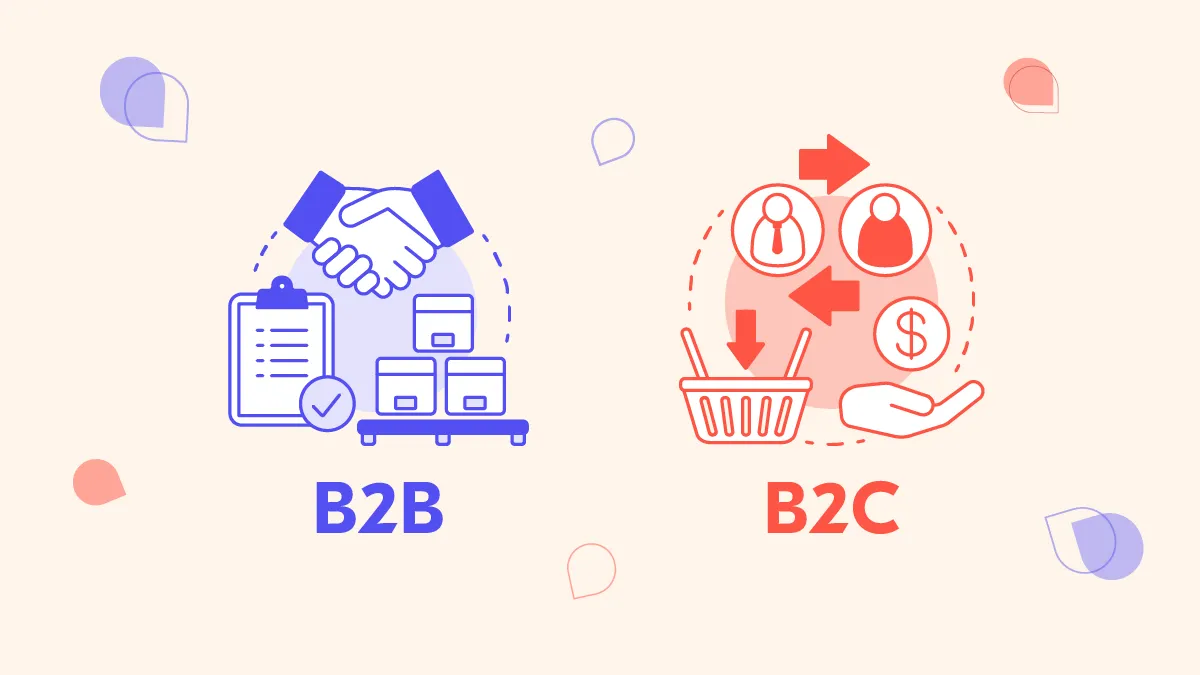| Posted on | Education
B2B vs. B2C: Understand the Key Differences
| Posted on
Business-to-business (B2B) and Business-to-Consumer (B2C) are the 2 essential business industrial business company organization fashions that are probably often used worldwide for change. Anyone searching to efficiently navigate the economic employer global has to understand the distinction between B2B and B2C.

Difference Between B2B and B2C
Business-to-enterprise, or B2B, refers to exchanges amongst agencies. A business organization-to-business employer (B2B) company of administrative centre assets, as an example, uses this organization version. Conversely, business enterprise-to-customer, or B2C, refers to interactions in which agencies sell items or services right now to customers; an example of this will be a retail maintainer selling garments to humans.
Target audiences and transaction types are the principal distinctions among industrial company-to-commercial enterprise and consumer transactions. B2C focuses on man or woman customers, while B2B is more involved with serving the necessities of different organizations.
B2B vs B2C Business Model
Long-term partnerships, enormous transactions, and an emphasis on value and cross lower back on funding (ROI) are the primary additives of the B2B business enterprise version. B2B groups frequently address massive orders and longer profit cycles at the same time as going for walks with fewer clients. For example, a software company that works with corporations to offer employer solutions needs to customize its products to shape their difficult requirements.
The B2C business company version, alternatively, places greater emphasis on the extent and the consumer experience. B2C businesses attempt to gain big income quantity with comparatively smaller person transactions via targeted on a wide target marketplace. The income cycle is usually shorter, and groups consciousness on advertising and advertising approaches that might swiftly and efficaciously attract an extensive range of customers.

B2B vs B2C Marketing
B2B and B2C advertising strategies are very unique from each other.
B2B advertising often focuses greater on education and understanding. It emphasizes forming bonds with human beings and earning their agreement. In B2B advertising, case research, whitepapers, content material advertising, and thorough product statistics are vital. Because B2B choice-making is extra complex and includes some stakeholders, advertising projects must bear in mind the pastimes and issues of different selection-makers internal to a company.
However, B2C advertising focuses greater on emotional appeal and brand recognition. Influencer collaborations, emotive storytelling, and social media advertising are some of the techniques utilized by B2C marketers to attract and hold clients. The goal is to have an effective brand presence and encourage set-off purchasing choices. B2C marketing messages are typically clearer and greater honest, emphasizing the characteristics and advantages of the product to enchantment to specific requirements and desires.
B2B vs B2C Sales
B2B income processes are normally longer and more complicated. Lead generation, qualifying, suggestion, negotiation, and closure are a number of the approaches they entail. A committed sales workforce is needed to manipulate connections and broaden leads for the route of the income cycle, which may final for several months or even years. B2B income in most cases relies upon relationship-constructing exercises, direct contact, and personal selling. The focus is on showcasing how an awesome provider may also enhance a client's business, boost productivity, or address a selected difficulty.
B2C income, however, is typically greater transactional and quicker. The purpose is to hastily flip as many potentialities into paying customers as you can. Promotions, reductions, and direct sales pitches are common B2C sales methods used to elicit brief purchases. B2C sales are frequently facilitated through mobile applications, online buying portals, and point-of-sale presentations.

B2B vs B2C Customer Relations
There are great variations in consumer connections between B2B and B2C situations.
Long-time period partnerships, dependability, and agreement are the cornerstones of B2B client connections. Keeping stable customer connections is vital in B2B transactions due to their complexity and extra dangers. To assure consumer happiness and loyalty, B2B groups invest in account management, common check-ins, and personalized care. Having a high-quality popularity in the industry is critical since it significantly affects agency possibilities through word-of-mouth and referrals.
B2C client members of the family, however, are targeting presenting an easy and exquisite experience. B2C corporations place an excessive price on timeliness, convenience, and customer support. They continuously beautify their services and clients enjoy them by way of using critiques, rankings, and feedback from clients. B2C customer family members techniques feature tailor-made advice, loyalty packages, and attentive customer support as crucial factors.
It's crucial to realize the primary differences between B2B and B2C for you to customize approaches that efficiently goal the ideal demographic. While B2B is more worried about organizing lengthy-lasting, meaningful connections with other organizations via thorough, fee-driven strategies, B2C seeks to draw in male or woman clients with transactions that can be enticing, speedy, and smooth. Businesses need to modify their advertising, income, and customer service strategies according to the specific possibilities and constraints offered using every model to achieve success in their male or woman markets.
0
0 Comment
| Posted on
B2B and B2C are two business transactions with different peculiar features, problems, and strategies. Grasping these differences thus holds the key to success in a business effectively making a dent in both or either of the target markets.

Differences between B2B and B2C
- Target Audience:
-B2B: This is where the target audience of the business comprises businesses, organizations, or professional individuals. The transactions usually involve bulk purchases for operational or resale purposes. Examples include manufacturers selling to wholesalers or service providers to corporations.
-B2C: The audience includes individual consumers purchasing for personal use. The focus is on fulfilling personal needs or desires. Examples are clothes, electronics, food, or any other goods people buy for their consumption.
- Sales Cycle:
-B2B: The sales cycles here are pretty long since they involve approvals of multiple stakeholders. There are comprehensive negotiations, proposals, and contracts to be drawn up. Relationship-building and trust are important components.
-B2C: Generally, the sales cycles are shorter and are targeted towards speedy transactions. Most decisions are made by individuals or small groups. Impulse buying happens the most in this category. The focus is on ease of transactions and pace.
- Decision-Making Process:
-B2B: The buying decision is rational; it's all based on data. Buyers look at ROI, efficiency, and long-term payback associated with any investment they are making. Multiple touchpoints and detailed information are required.
-B2C: More emotionally driven, by personal preference or desires; brand loyalty, convenience, and customer experience are huge drivers to final purchasing decisions.
- Marketing Strategies:
- B2B: Content-driven marketing efforts focus on value propositions, case studies, and whitepapers. It educates and furthers long-term relationships. Channels include LinkedIn, industry publications, and trade shows.
-B2C: Developing an emotional connection with the consumer is how marketing pans out. How this is accomplished can include social media marketing, influencer pairing, and recommendations that are customized. CRs come into the picture with visual appeal and brand storytelling.
- Customer Relationships:
-B2B: Relationships are based on trust and reliability and may involve account managers and long-term contracts. Service to customers is highly individualized, proactive, and attuned to particular business needs, with service provided continuously.
-B2C: Relationships are transactional but can be fostered through loyalty programs, responsive customer service, and consistent brand engagement. Companies track and manage customer interaction through CRM systems.

Pricing and Purchase Characteristics
- Pricing:
-B2B: Prices are generally negotiable, depending on the purchase quantity and contract terms. Discounts and custom pricing are common practices to secure long-term business relationships.
-B2C: Prices are usually fixed, with occasional sales and promotions. The focus is on perceived value, affordability, and competitive pricing to attract individual buyers.
- Order Size and Frequency:
-B2B: The order size is larger and the frequency of placement is lower. Purchases are planned; budgeting is done to satisfy certain business needs, which translates to bulk buying with recurring orders based on supply contracts.
-B2C: The order size is smaller with higher frequency. Purchases are driven by individual needs and wants. Consumers buy items regularly, often driven by trends, seasonality, and immediate needs.
Marketing and Sales Channels
- B2B Channels:
-LinkedIn: One of the major B2B marketing channels since it provides a professional network for targeting decision-makers.
-Trade Shows: Effective in building personal networking and product demonstration to potential business prospects.
-Industry Publications: Articles, case studies, and advertisements in niche magazines and journals target specific industries.
- B2C Channels:
-Social Media: Instagram, Facebook, and TikTok have been at the helm of consumer-centricity through engaging content and ad displays.
-E-commerce websites: direct sales through easily accessible online shops with a unique experience and customization of the shopping atmosphere.
-Influencer marketing: Working with influencers to drive products to the markets and to gain credibility among the influencers' followers.

Technology and Digital Presence
- B2B:
-Has a very sophisticated CRM system to consolidate the relationship with clients and manage the sales pipeline.
-Uses advanced marketing tools to nurture leads through the sales funnel based on the received content and follow-ups provided.
Uses advanced analytics for measuring ROI and data-driven optimization in marketing strategies.
- B2C:
- Improves user experience through user-friendly website design and mobile apps.
Personalizes marketing—and does personalized recommendations and offers using customer information.
Executes search optimization, and content marketing to generate organic traffic, and improve your search engine ranking.
Conclusion
Knowing the actual differences between the B2B and the B2C model is critical so that one can tailor a proper approach for each of their demands. B2B transactions are typified by long cycles of sales, data-driven decision-making, and relationship-oriented marketing. On the other side, B2C transactions consider fast sales, emotional engagement, and serge-wide marketing tactics. Using this, businesses empower themselves to engage the right audience and foster long-term growth effectively.
It is through appreciating these distinctions and implementing the proper strategies that a business shall optimize its operations to better customer satisfaction, leading towards better long-term success in its respective markets.
0
0 Comment
